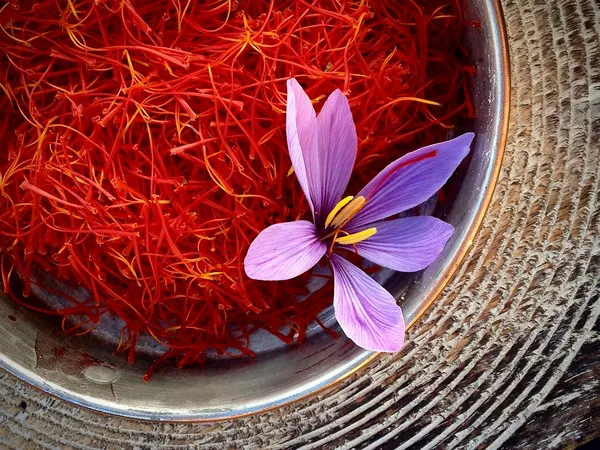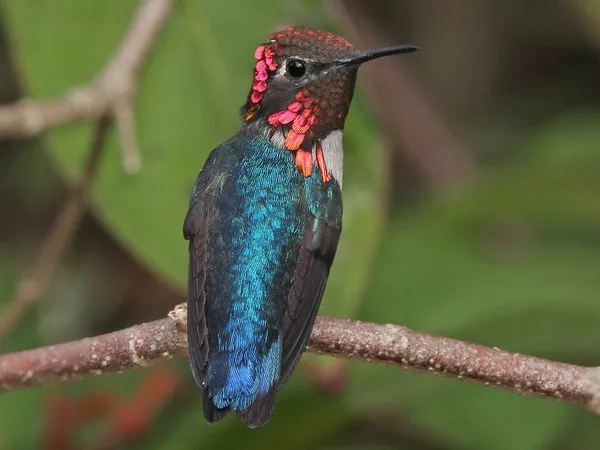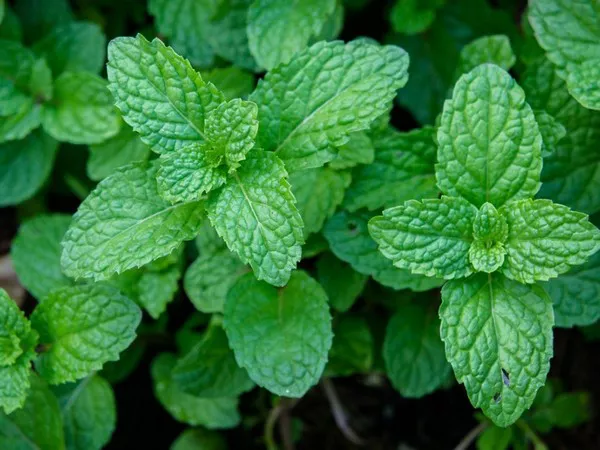In the realm of culinary and medicinal treasures, herbs play a significant role, offering flavors, fragrances, and healing properties that enrich our lives. While many herbs are readily available and affordable, some stand out for their rarity, labor-intensive cultivation, and unique characteristics, commanding prices that elevate them to the echelons of luxury. In this exploration, we embark on a journey through the world of the 10 most expensive herbs, uncovering the stories behind their high value, culinary uses, and cultural significance.
10 Most Expensive Herbs
1. Saffron: The Golden Elixir
At the pinnacle of expensive herbs stands saffron, revered for centuries as the world’s most precious spice. Derived from the delicate stigma of the Crocus sativus flower, saffron’s rarity is intertwined with its labor-intensive cultivation and meticulous harvesting process. Each flower produces only three crimson stigmas, which are handpicked during a brief flowering season. With tens of thousands of flowers required to yield just one pound of saffron, the herb’s scarcity contributes to its high market value.
Cultivated primarily in Iran, India, and Spain, saffron’s unique chemical composition, including crocin, picrocrocin, and safranal, imparts its distinct flavor, color, and aroma. Beyond its culinary applications, saffron holds cultural and symbolic significance, associating it with wealth, purity, and celebration. With a price range of $5 to $20 per gram, saffron’s golden hue commands a luxurious presence in kitchens and markets worldwide.
2. Vanilla: The Orchid Emissary
While vanilla is a common flavoring, the true vanilla bean, derived from the vanilla orchid (Vanilla planifolia), is one of the world’s most expensive herbs. Native to Mexico, the vanilla orchid’s intricate pollination process requires manual intervention, as its natural pollinator, the Melipona bee, is absent in regions where vanilla is commercially cultivated. Each vanilla flower must be hand-pollinated within a 24-hour window, making the process laborious and contributing to the herb’s high cost.
Madagascar, known as the “Vanilla Island,” produces the majority of the world’s vanilla. The lengthy curing process, where the green beans are blanched, fermented, and sun-dried, further contributes to the herb’s labor-intensive production. Vanilla’s warm, sweet aroma and flavor make it a prized ingredient in both culinary and fragrance industries. The price of vanilla, susceptible to market fluctuations, has experienced significant spikes, at times reaching over $600 per pound.
3. Black Truffle: Earth’s Underground Jewel
The black truffle, a subterranean fungus prized for its robust, earthy aroma and distinct flavor, is among the world’s most expensive culinary delights. Harvested from the roots of certain tree species, primarily oak and hazelnut, black truffles require a symbiotic relationship with specific soil conditions and host trees.
Native to regions in Europe, such as France and Italy, black truffles are sought after by chefs and gourmands for their ability to elevate dishes with a unique umami richness. Truffle hunting is traditionally performed with trained dogs or pigs, adding an element of mystique to the harvesting process. The scarcity of black truffles and the challenges in cultivation contribute to their high market price, which can exceed $2,000 per pound.
4. Ginseng: The Root of Vitality
Renowned in traditional Chinese medicine for centuries, ginseng is a slow-growing herb with a gnarled root prized for its alleged health benefits. Ginseng’s adaptogenic properties are believed to enhance the body’s resilience to stress and improve overall well-being. The herb’s scarcity and the time-intensive cultivation process contribute to its high market value.
Ginseng is predominantly grown in regions with specific soil and climate conditions, such as parts of North America and Asia. Wild ginseng, harvested from natural habitats, is particularly prized for its potency, but strict regulations aim to protect wild populations from overharvesting. The cultivation process requires several years before the ginseng root reaches maturity, adding to the herb’s rarity. Ginseng’s value varies based on factors like age, quality, and origin, with prices reaching several hundred dollars per pound.
5. Chervil: A Culinary Rarity
Chervil, often referred to as the “gourmet’s parsley,” is an herb prized for its delicate flavor reminiscent of anise and parsley. While not as widely known as some other herbs on this list, chervil’s relative scarcity contributes to its elevated market value. Native to regions in Europe and Western Asia, chervil is cultivated for its tender leaves, which are rich in aroma and flavor.
Chervil is a key ingredient in French fines herbes, a classic blend of culinary herbs that includes parsley, chives, and tarragon. Due to its fragility and short shelf life, chervil is often used fresh, making it a coveted herb among chefs seeking to impart a subtle, sophisticated note to dishes. Prices for fresh chervil can range from $5 to $10 per ounce, reflecting its status as a culinary rarity.
6. Kava: The Pacific Elixir
Kava, derived from the roots of the Piper methysticum plant, is a traditional beverage in Pacific Island cultures known for its relaxing and calming effects. The plant’s active compounds, kavalactones, have sedative properties that are believed to reduce anxiety and induce a sense of tranquility.
Cultivated primarily in the South Pacific, kava requires specific growing conditions, including well-drained soil and a tropical climate. The roots are harvested, ground, and mixed with water to create the traditional kava drink. While kava is not as widely recognized as some other herbs, its scarcity in certain regions and the demand for its psychoactive effects contribute to its market value. The price of kava can range from $20 to $50 per pound, depending on factors such as quality and origin.
7. Dittany of Crete: A Mediterranean Marvel
Dittany of Crete (Origanum dictamnus), native to the mountains of Crete, is a rare herb known for its aromatic leaves and historical significance. Traditionally used in herbal medicine and culinary applications, dittany of Crete is celebrated for its purported healing properties and unique flavor profile.
The plant’s scarcity is partly due to its specific habitat requirements and the challenges associated with cultivation. Dittany of Crete is a protected species in Greece, where it grows in rocky terrains at high altitudes. The leaves are harvested and dried for use in teas, infusions, and traditional remedies. Its rarity and limited availability contribute to its higher market price, with dried dittany of Crete often priced at $15 to $20 per ounce.
8. Chive Blossoms: Delicate Allure
While chives themselves are a common herb found in many gardens and kitchens, their blossoms, prized for their delicate flavor and vibrant appearance, are considered a culinary luxury. Chive blossoms, the flowers of the chive plant (Allium schoenoprasum), are edible and possess a mild onion flavor that adds a subtle sophistication to dishes.
The challenge in obtaining chive blossoms lies in their short blooming season and delicate nature. Harvested at the peak of freshness, chive blossoms are often used as a garnish, in salads, or to infuse vinegar. Due to their limited availability and the meticulous timing required for harvesting, chive blossoms are considered a specialty herb, with prices ranging from $10 to $15 per ounce.
9. Lemon Verbena: Citrus Elegance
Lemon verbena (Aloysia citrodora) is an herb celebrated for its intense lemon fragrance and citrus flavor. While lemon verbena is relatively easy to cultivate in warm climates, its high market price is attributed to its delicate nature and the difficulty of preserving its vibrant aroma in dried form.
Native to South America, lemon verbena is cultivated for its aromatic leaves, which are used to infuse teas, culinary dishes, and even fragrance products. The herb’s fragility and the challenges in retaining its essential oils during the drying process contribute to its elevated market value. Prices for dried lemon verbena can range from $10 to $15 per ounce, reflecting its status as a culinary indulgence.
10. Lovage: An Underrated Rarity
Lovage (Levisticum officinale) is an herb with a distinct flavor profile, reminiscent of celery and parsley. While not as commonly known as some other herbs, lovage’s relative scarcity and unique taste contribute to its status as an expensive culinary herb.
Native to Southern Europe, lovage is cultivated for its aromatic leaves, stems, and seeds. The plant is often used to impart a savory, umami-like note to dishes. Lovage’s limited availability, coupled with the demand for its unique flavor, contributes to its higher market price. Prices for dried lovage can range from $5 to $10 per ounce, making it a less-known but nonetheless valuable addition to the world of expensive herbs.
See Also:TOP 10 FLOWERS WITH THE MOST PETALS YOU MAY NOT TO KNOW
Conclusion:
The world of herbs encompasses a vast array of flavors, aromas, and cultural significance. While many herbs are readily available and accessible, the 10 discussed in this exploration stand out for their scarcity, labor-intensive cultivation, and unique characteristics that command premium prices. From the golden threads of saffron to the earthy richness of black truffles, each herb on this list offers a glimpse into the diverse and luxurious tapestry of the culinary and medicinal herb market. As we continue to explore and appreciate the intricate world of herbs, these expensive varieties remind us of the artistry, history, and craftsmanship that elevate them to the echelons of gastronomic and cultural significance.
You Might Be Interested In:


























